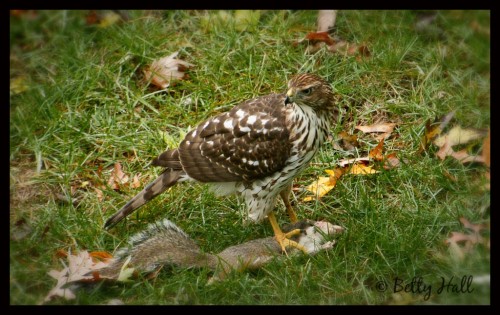In last week’s post, “Life and death in the backyard,” Harry and I thought the bird we’d seen was a red-shouldered hawk (Buteo lineatus). However, we were not certain and I invited other ideas. Thanks to the comments of excellent birders, we are now convinced that it was a Cooper’s hawk (Accipiter cooperi).
Category: Backyard
Life and death in the backyard
Eastern gray squirrels (Sciurus carolinensis) are very much a part of our backyard. They are entertaining to watch. However, they also frustrate us by eating so much of our bird seed and digging where I’d rather they didn’t. When we saw a hawk eating one of them last week, I had mixed emotions.
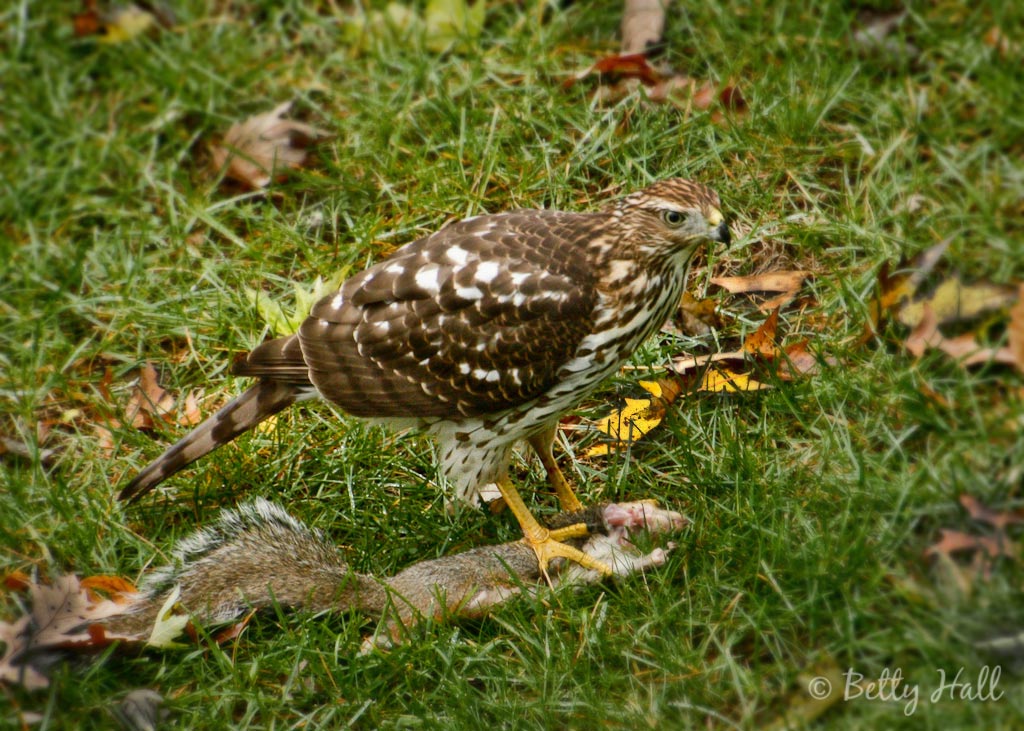
I felt sad for the squirrel. Yet I also appreciate the majestic beauty of hawks and the part they play in the balance of nature. I know they must eat to survive. Bottom line, I’m glad to have seen this hawk at close range, and also glad we still have squirrels in the backyard.
After checking our bird guides and the Cornell Laboratory of Ornitholgy website, our best guess is that this is an immature red-shouldered hawk (Buteo lineatus). If so, it’s the first one we’ve seen in our yard. If anyone has a different idea I’d be glad to hear from you.
Black gum in October
I’m glad we took Stacy Borden’s advice in 2005 and planted a black gum, or tupelo tree, (Nyssa sylvatica) in the backyard. I like it for several reasons, however I especially like its consistent fall color.
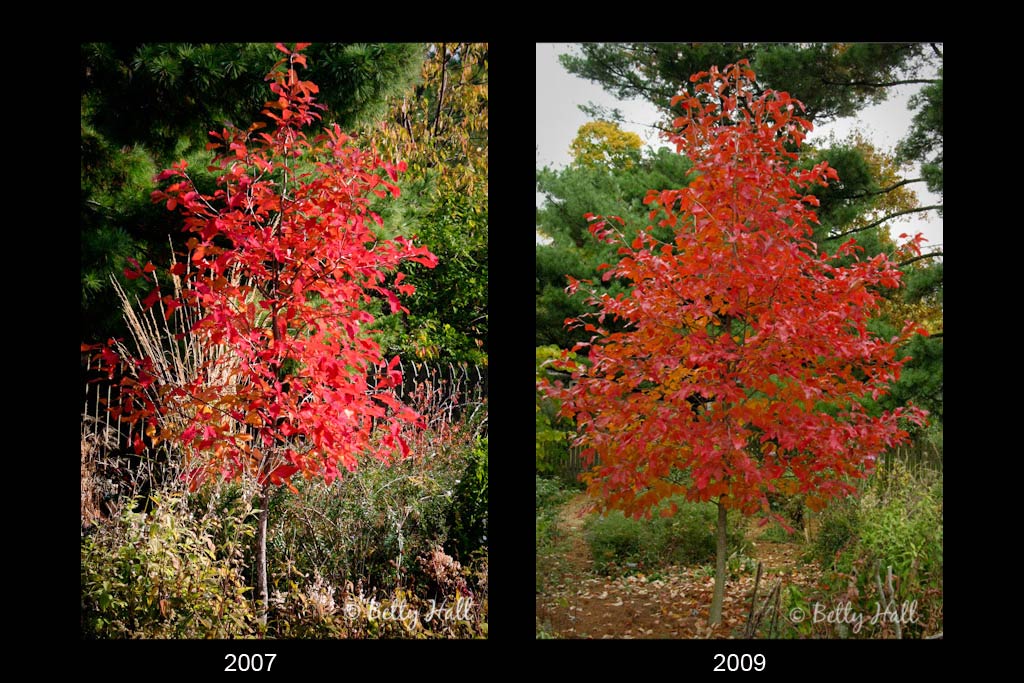
Small splashes of fall color
I’m continuing to enjoy all the colors of Lexington’s many trees. In our backyard, the black gum or tupelo (Nyssa sylvatica) is almost breathtaking with its brilliant red leaves. However, as I wandered in the garden this morning, I discovered other, smaller splashes of color as well. This blueberry bush (Vaccinium corymbosum) almost seemed to glow with its mixture of reds and yellows.
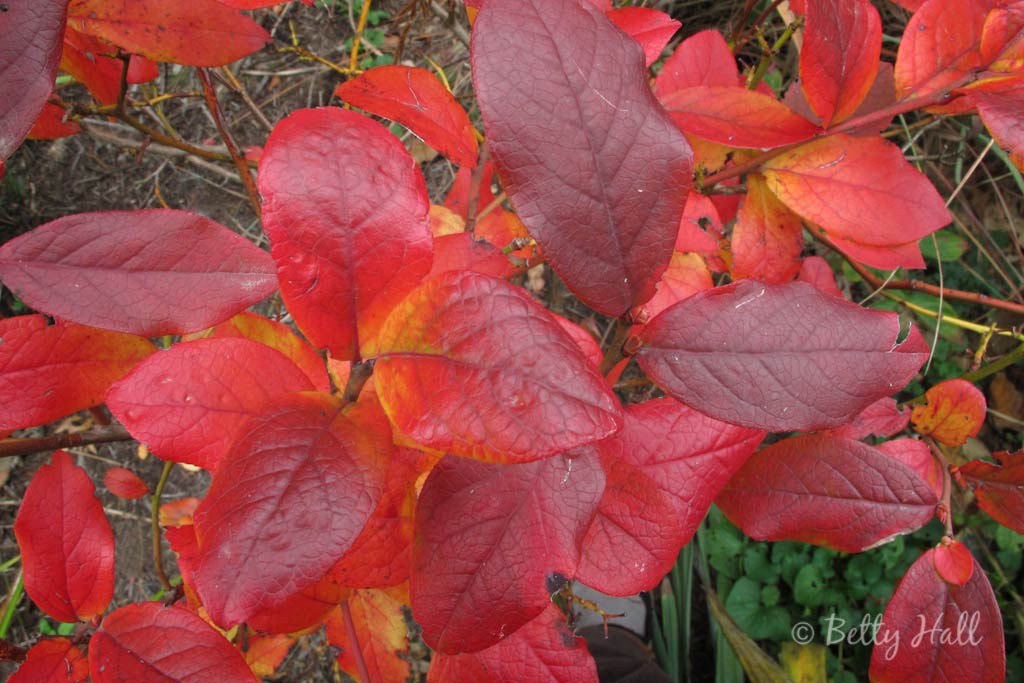
October gardenscape
As the growing season comes to a close, the backyard is looking somewhat scraggly. One exception is the view of the rain garden.
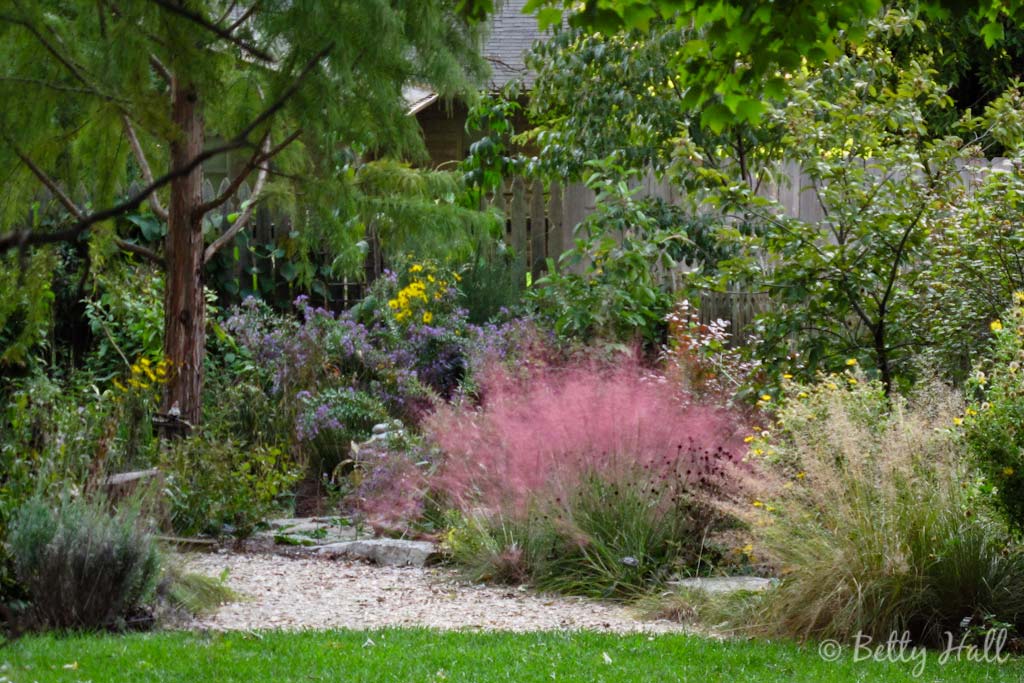
The pink muhly gass (Muhlenbergia capillaris) is especially striking, and makes a much bolder statement than when it first bloomed in October 2010. It’s been providing a splash of pink for about three weeks now, and it brightens my mood every time I see it. Here’s hoping it stays around a bit longer.

